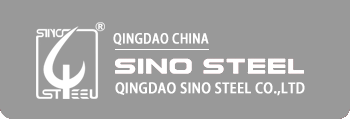News analysis: European and American trade renewed disputes
2019-04-23
News analysis: European and American trade renewed disputes
Xinhua News Agency reporter Wang Zichen
The United States and the European Union recently accused each other of providing illegal subsidies to the aviation industry to cause significant losses to themselves, and successively issued a list of retaliatory taxable goods. The trade dispute between the two sides has revived, and the prospects for negotiations have become increasingly unpredictable.
After the United States threatened to impose tariffs on EU goods worth about 11 billion U.S. dollars on the 8th of this month, the EU also issued a list of US goods worth about 20 billion U.S. dollars on the 17th, threatening to impose tariffs. However, unlike the previous trade conflicts between the two sides on the issue of steel and aluminum tariffs, both sides have so far indicated that they will act in accordance with the rules of the World Trade Organization.
The anti-subsidy dispute between the United States and the European Union, which focuses on the two major aviation giants, Boeing and Airbus, has a long history. In 2004, the United States filed a lawsuit against the WTO, accusing the EU of providing illegal subsidies to Airbus in various forms; and the European Union subsequently sued the US government for providing huge illegal subsidies to Boeing. In this regard, the WTO has successively ruled that both the United States and the European Union have problems in providing illegal subsidies to their respective aviation companies.
This time, the respective "retaliations" of the European and American sides have the WTO ruling "supporting the waist", and both sides have also clearly stated that the final increase in the amount of imported goods will be determined according to the further arbitration of the WTO.
Europe and the United States around the aviation industry subsidies to "price" each other, adding to the negotiations between the two sides in the broader trade area.
The European Council recently authorized the European Commission to start trade negotiations with the United States, but before the start of the negotiations, it has drawn a number of "red lines" that the United States is unacceptable.
One of the "red lines" is that the Commissioner for Trade Affairs in the European Commission, Malmstrom, made it clear that agricultural products are not within the scope of negotiations. This is extremely dissatisfied with the Trump administration, which has been one of the targets of expanding exports of EU agricultural products. Trump recently said at a public event in Minnesota: "They (Europe) hardly buy our agricultural products, but sell Mercedes-Benz and all the products they want to sell, including agricultural products, to us. This is unfair. !"
The second line of the "red line" is that the EU said that as long as the United States does not cancel the previously imposed tariff on steel and aluminum, this round of trade negotiations will not yield results.
Since June 1, 2018, the United States has imposed tariffs on steel and aluminum products in the EU, Canada and Mexico. Analysts generally believe that it is difficult for the Trump administration to revoke tariffs on steel and aluminum before seeing the EU make specific concessions. Simon Evannet, professor of international trade and economic development at the University of St. Gallen in Switzerland, said, "Trump really likes tariffs (this tool). If (no external pressure) is completely decided by him, he may always be The tariffs already imposed will not be revoked." The tariff on steel and aluminum will therefore become an important reason for the unpredictable future of trade negotiations in Europe and the United States.
In addition, the EU also made it clear that once the United States has adopted more trade restrictions on the EU, the EU will unilaterally suspend negotiations.
The EU's goal of trade negotiations with the United States is to exempt industrial product tariffs and remove regulatory barriers. However, the United States is not enthusiastic about this. Trump has repeatedly publicly called for threats to impose tariffs on cars exported to the United States by the European Union. In this regard, how to bridge the differences between the two sides in Europe and the United States, the future is uncertain.
Even if the trade negotiations between the two countries are progressing smoothly, the United States' withdrawal from the Paris Agreement on climate change will also pose a hidden danger for the possible trade agreement. France opposes the European Council's authorization of the European Commission to initiate trade negotiations with the United States. According to EU rules, the European Council authorizes negotiations without the unanimous consent of all EU member states, but once the negotiations have yielded results, the agreement will require unanimous support from all EU member states.
“No one expects the progress of the negotiations to be very fast,” said Frederic Eriksson, director of the European Center for International Political Economy at the think tank in Brussels. The position in Europe and the United States is very different, and bilateral trade relations will be turbulent in the future.
Previous Page: Building a "One Belt, One Road" to demonstrate China's determination to strengthen international cooperation
Next Page: “The Belt and Road” has become the second largest trading sector in the world
CONTACT US
We're always working to expand the boundaries of what's possible. Stay up-to-date with the latest news, announcements and stories from SINO STEEL.
PRODUCT INQUIRY
Give us a few details about yourself and the demand requirements of products, we will reply you as soon as possible.






